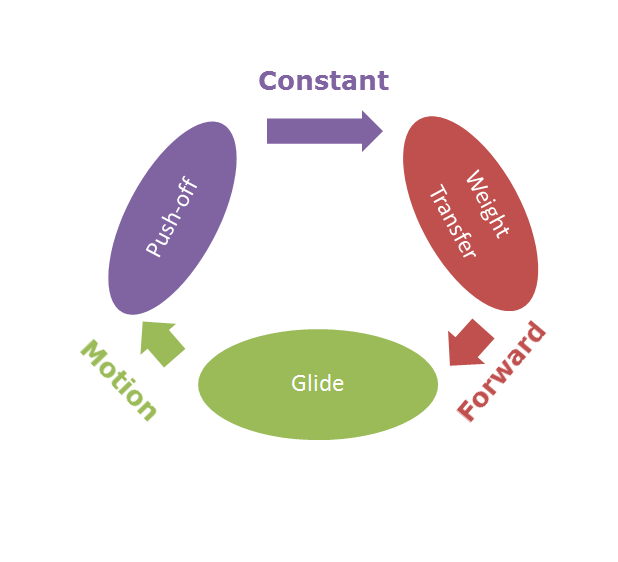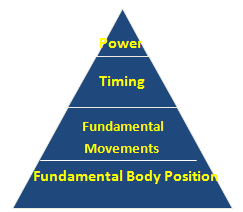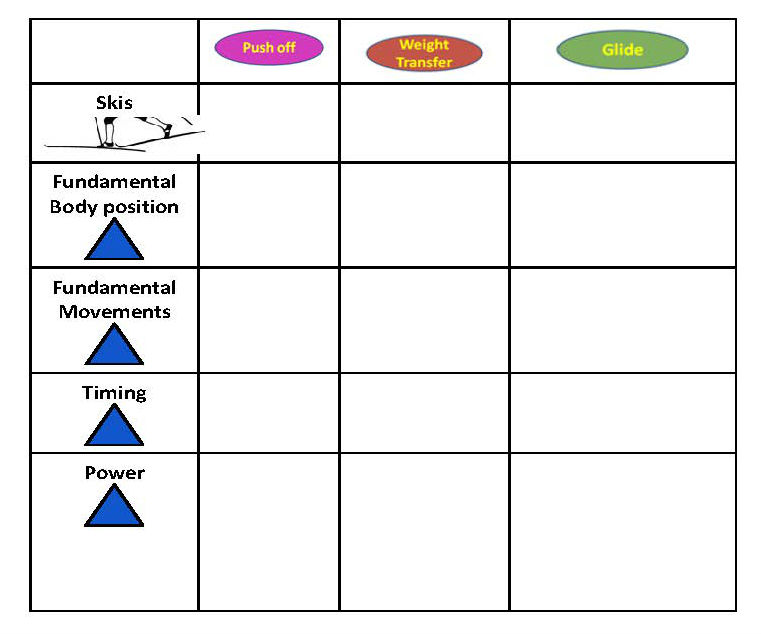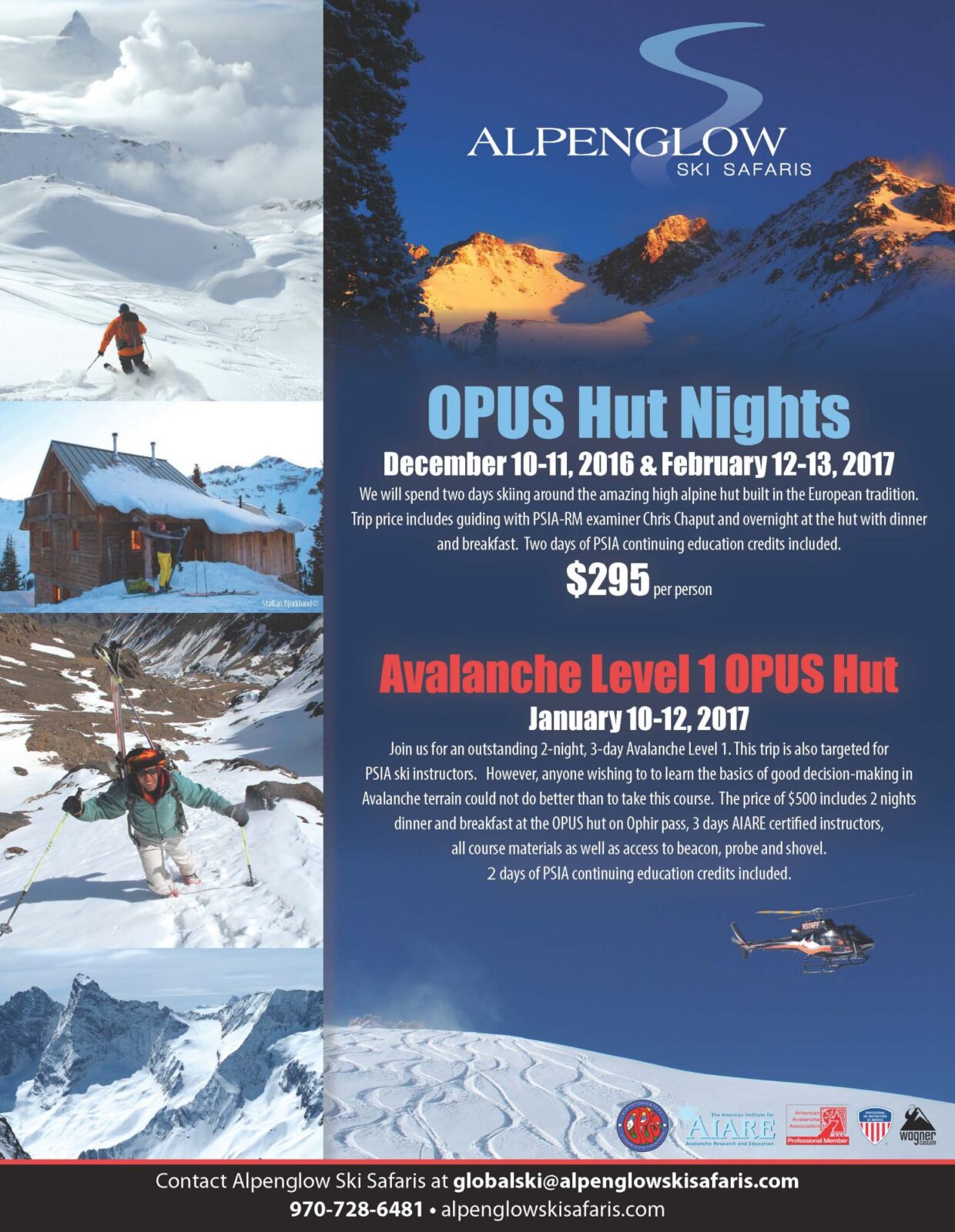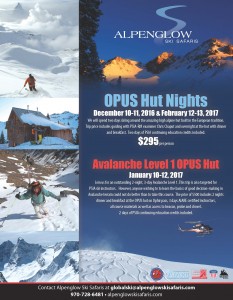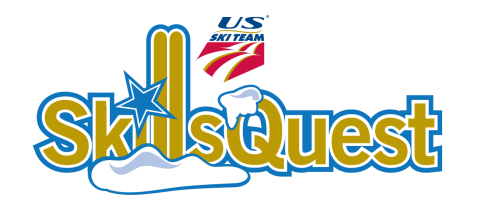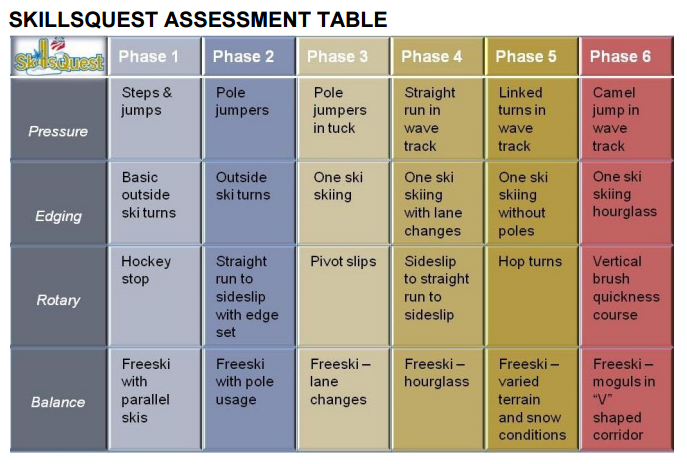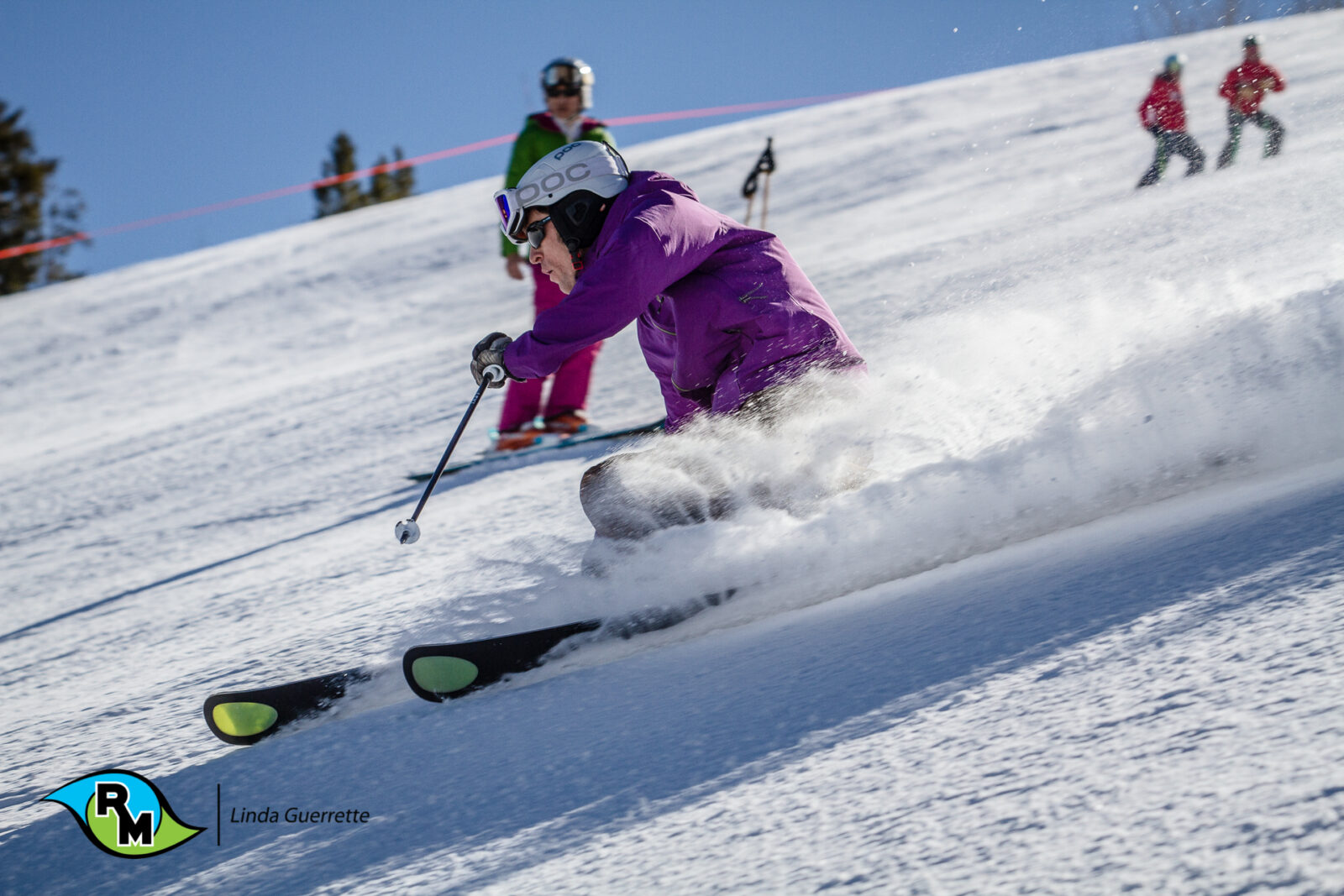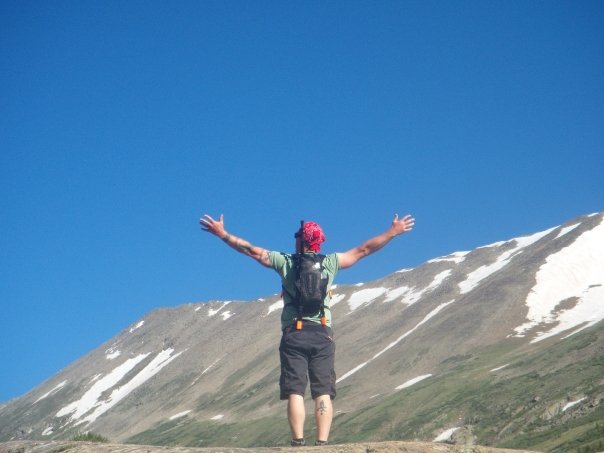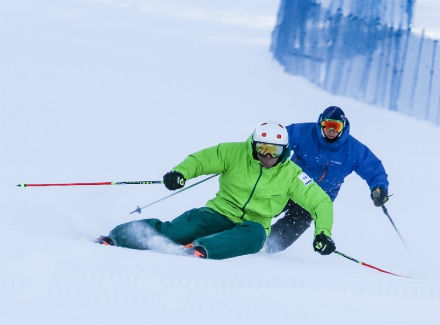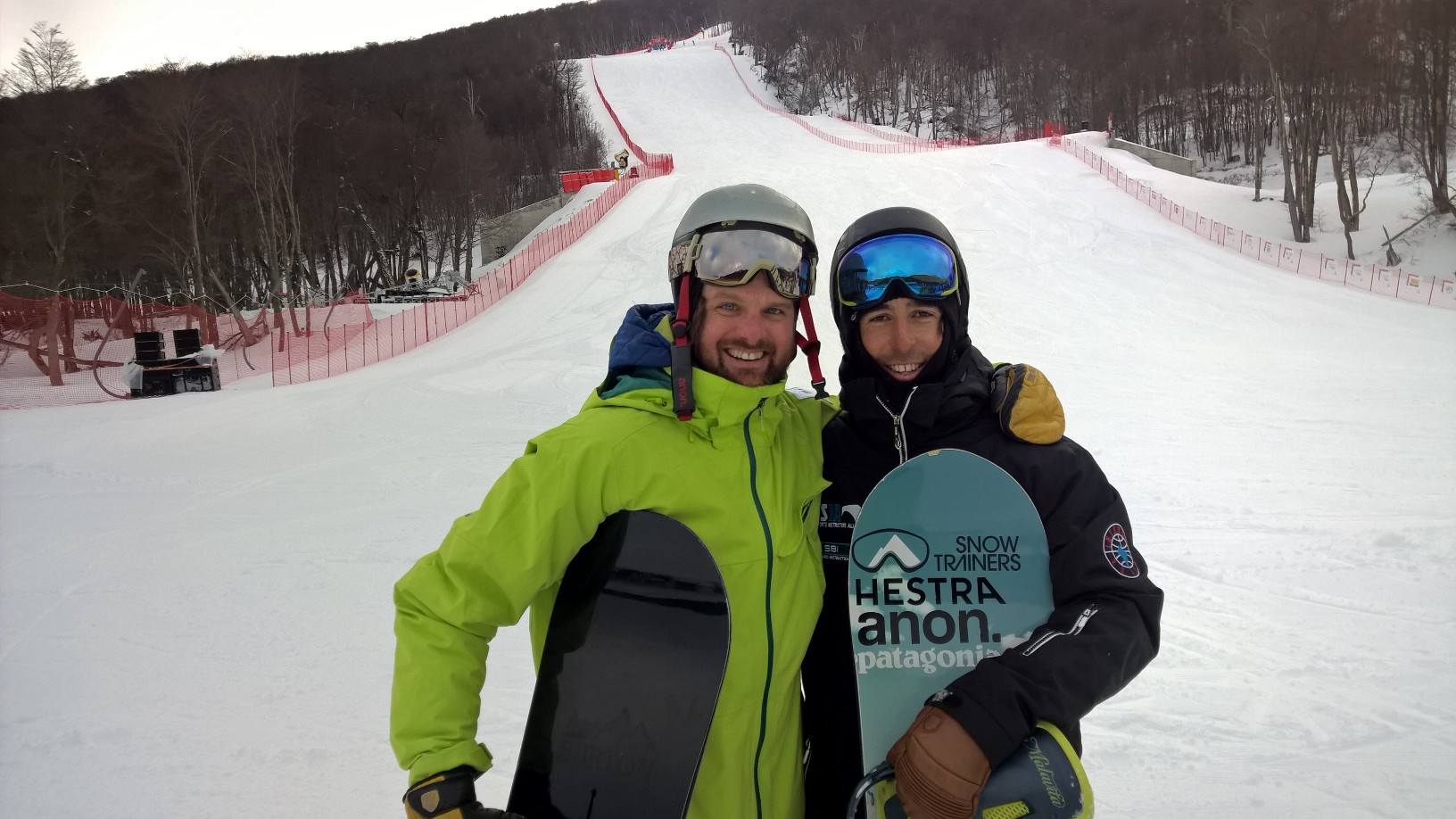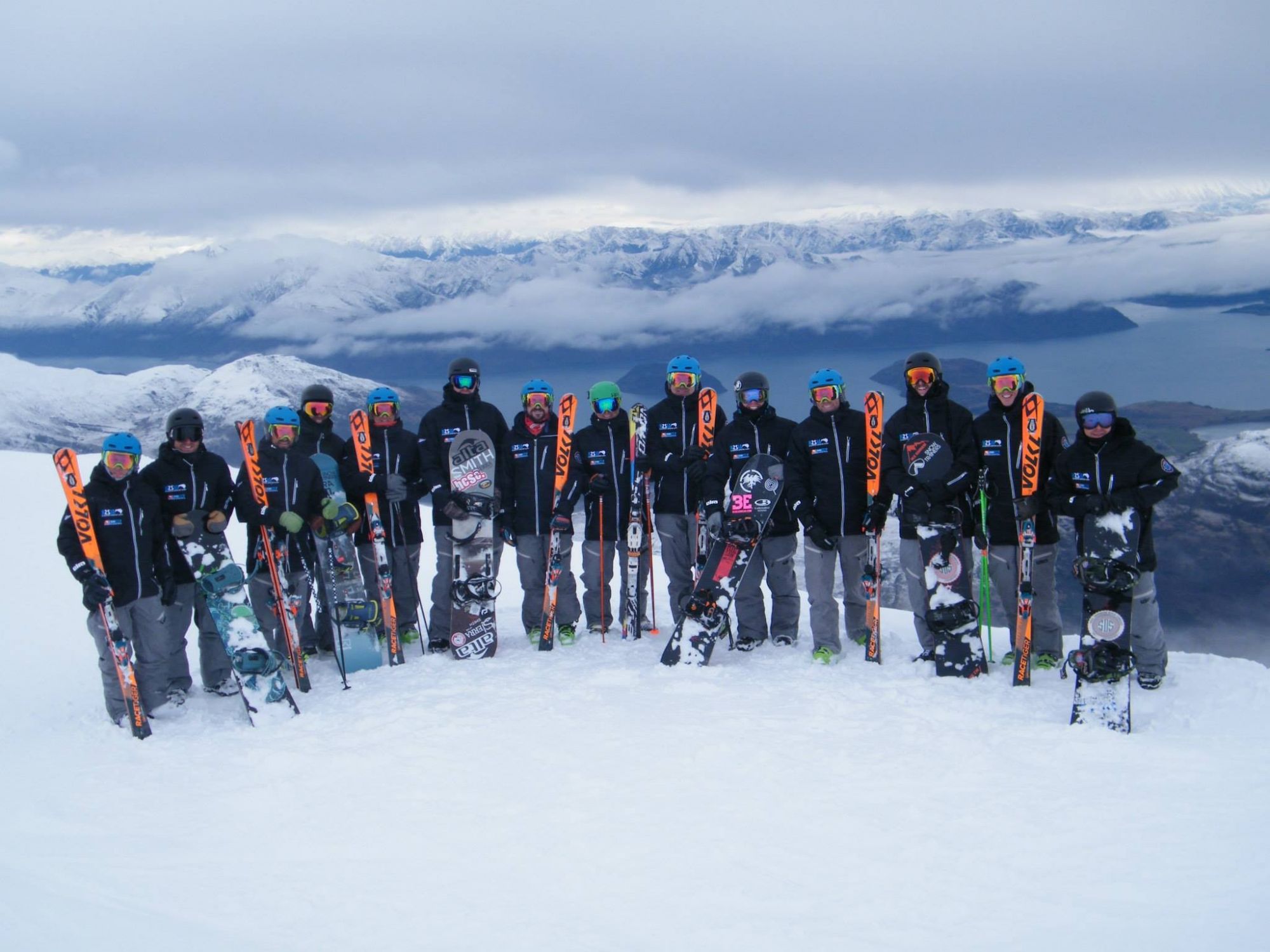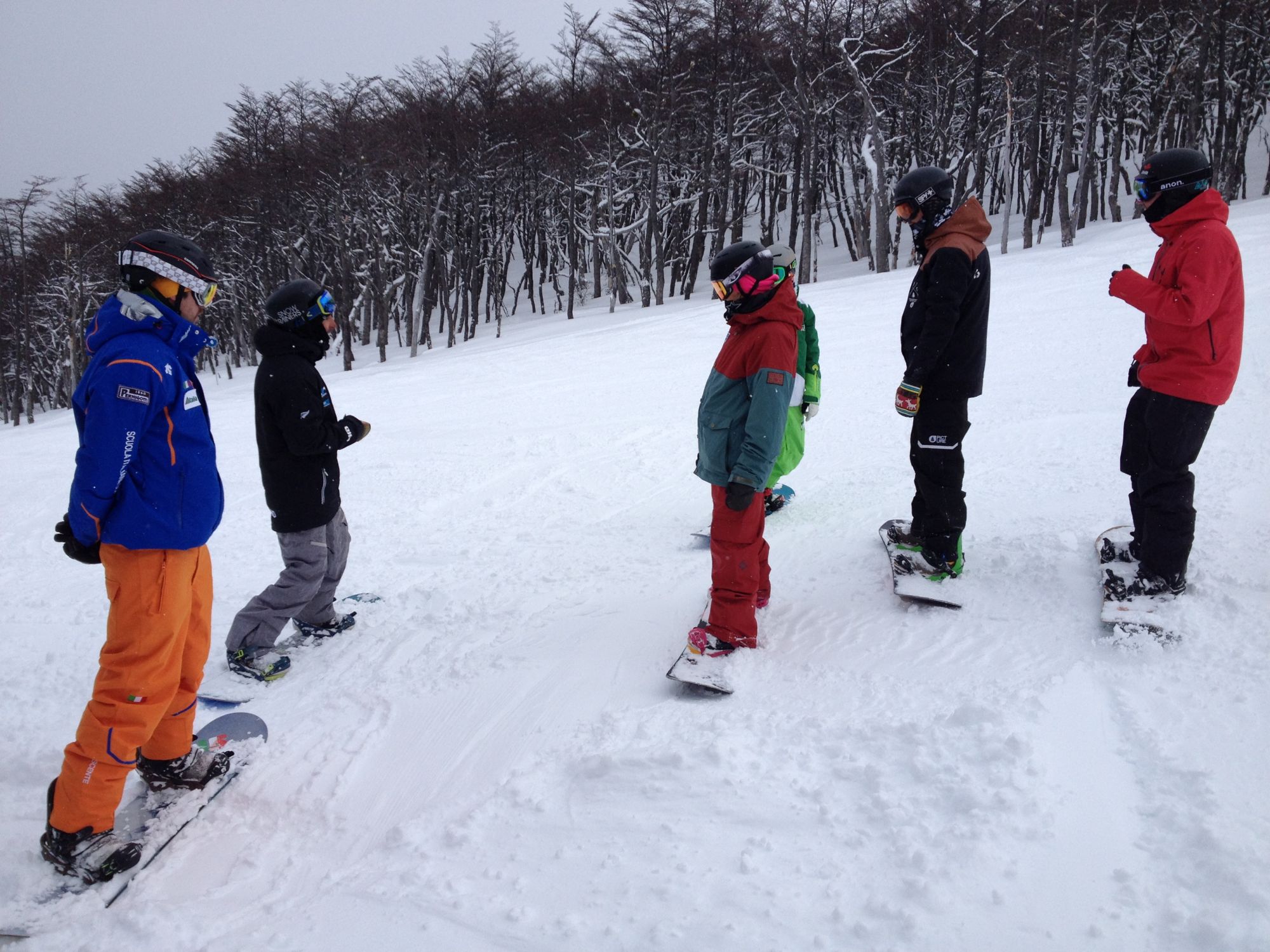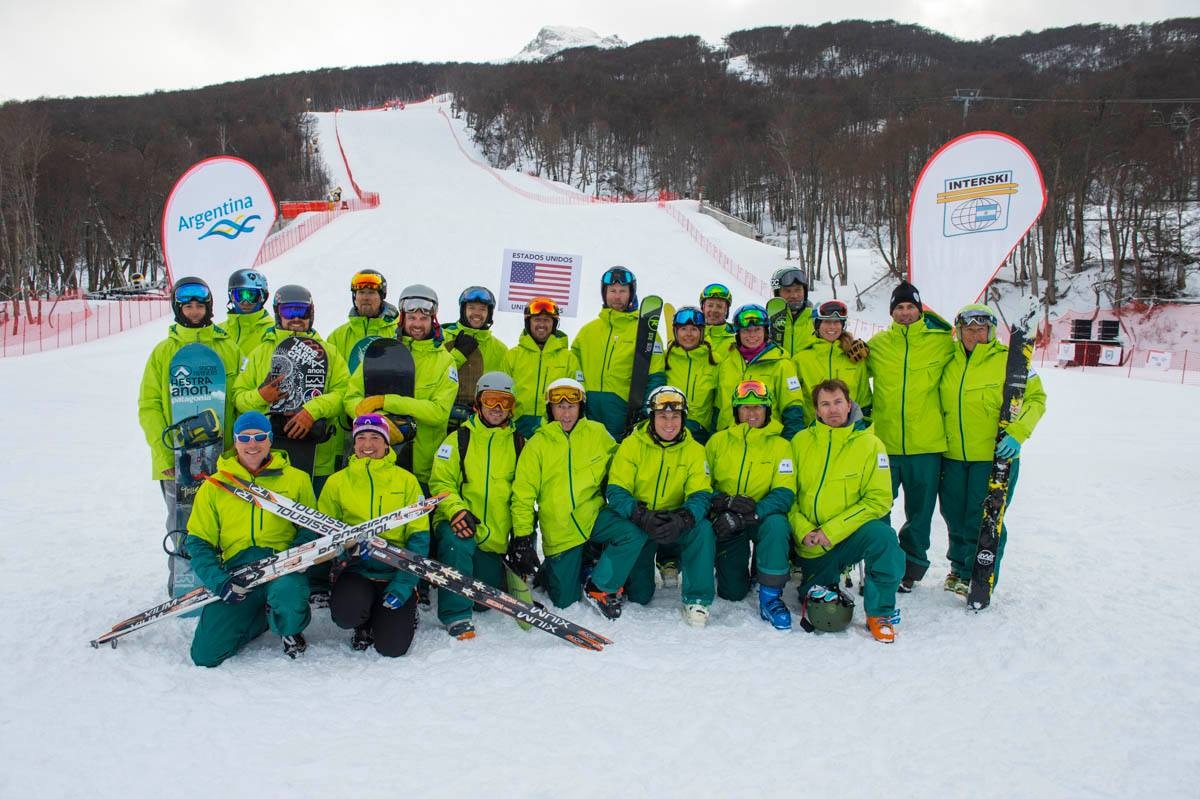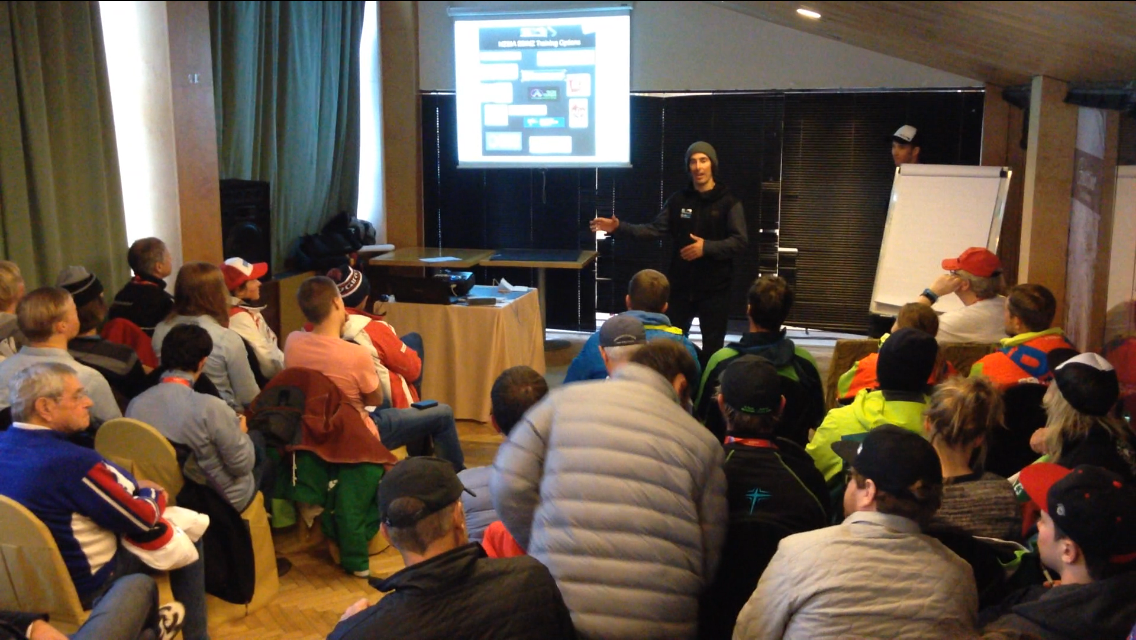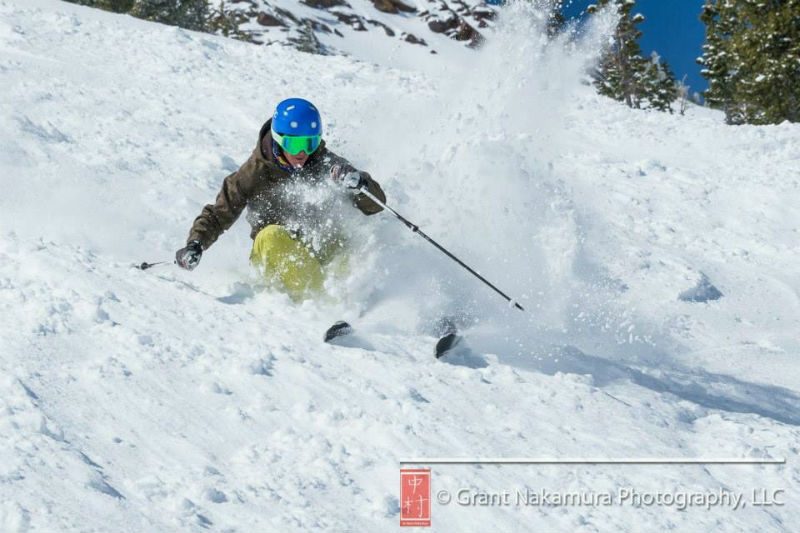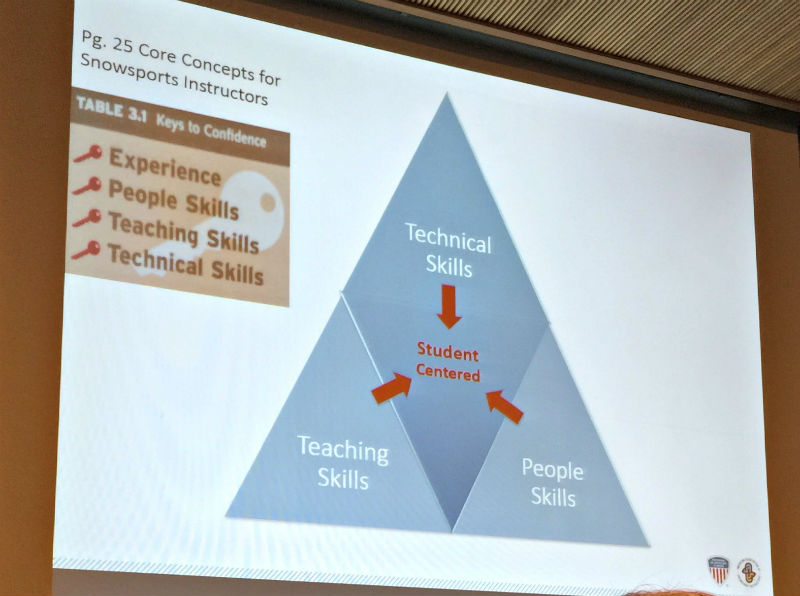The Scoop
Sliding Sideways with Rocky Mountain
AASI RM instructors,
It’s been an awesome few years for the Rocky Mountain division, and as we plan for the next few, I’m excited to introduce myself as the new Snowboard Education Committee Chair.
First, I want to offer a huge thank you to my friend and mentor, Scott Anfang. Scott steered the ship for the last two years, but after accepting the PSIA-AASI National Team Coach position decided to step down from the committee chair role.
Likewise, I want to thank Spicky, Tony Macri, Jeff Patterson, Ray Sforzo, and everyone who has dedicated time, served as committee chair, and helped drive our organization to where it is now. It is no small task, and it’s because of their dedication that we’re all able to enjoy a career in snowboard instruction.
So what is the snowboard education committee? It’s a question I’ve heard a dozen times in the last few months, and my answer changes a bit every time. Essentially, it’s a group of seven passionate, dedicated volunteers, who’ve been elected by the RM Education Staff to continue the development of our division while holding to the national standards and maintaining the quality we’ve all grown accustomed to. The committee is largely responsible with balancing feedback from our members, member schools, the RM office, and national standards while maintaining a level of consistency, honoring our past, and looking to the future.
The committee seats are selected from members of the education staff, except for one position which may be held by a non-examiner “member at large.” The current Snowboard Education Committee is: Scott Anfang, Christina Bruno (Member at Large), Chuck Hewitt, Robin Kisiel, Mark Lawes, Tony Macri, and Chris Rogers (Chair).
In the last few years, the committee has revamped the exam process at all three levels, recorded new MA videos annually, introduced an e-learning component to the Level 1 exam, created riding standards videos for our exam tasks, redeveloped the written exams, kept the website documents updated, and made hundreds of little tweaks throughout the entire process.
I’m proud of what the committee has accomplished, but looking at the to-do list, know we have even more to accomplish. Our first committee meeting of the season was held at the examiner Fall Training event and we began discussions for some big projects that will absolutely affect snowboard education in Rocky Mountain.
One of the biggest announcements for 16-17 is the rollout of paired examining at the L2 Exams. We’ve added a second examiner to each exam group to evaluate performance on the Ride and Teach days with the goal of adding transparency and creating a higher level of consistency with our standards.
Paired examining is just the start, and I will be asking this committee to be more active, to seek more input, and to become more flexible, fast moving, and proactive. We will be adopting new education tools and concepts from other disciplines and organizations, rebuilding our exam assessment forms, re-evaluating the cert pre-requisite system, designing and promoting additional elective clinic opportunities, hiring new E1s, and snowboarding as much as possible! As such I encourage you to be more active as well. There will be surveys, focus groups, and plenty of opportunities to get involved and have your voice heard. Your feedback is essential to the development of our discipline, our division, our organization, and ultimately our profession.
I believe it is an exciting, fast-moving time to be a part of our industry, and I’m stoked to be on this journey with you all. Please reach out to me, the committee members, or the RM office with any ideas, questions, and concerns.
Welcome to winter… Let the snow fly!
Chris Rogers
Follow along on Instagram & Twitter: @chrisrogersvail
Board to Amend Bylaws
On November 17th at 6:00 the Rocky Mountain Board of Directors will have a regularly scheduled board call where they will be voting on amending the Bylaws. Below is a link to the proposed changes. All members are welcome to attend this call by coming to the RM office at 6:00 on the 17th. The address: 2300 Mt Werner Circle Unit C2 Steamboat Springs, CO.
Director of Education Report – By Dave Gregory
As the final leaves are falling and ski and ride videos are consuming all of my social media accounts, I’d like to let you know about a few educational announcements and reminders.
Alpine and Snowboard Level 1 members are no longer required to attend the Certification Update Clinic.
As announced last season, we introduced the Certification Update clinic as a required clinic every four years for all certified alpine and snowboard members. Click here to read the announcement. The purpose of the clinic is to keep members who are no longer in the certification process up to date with current methodology and education standards. After running several of these events over the last couple of years, we have listened to the membership and we have decided to remove the requirement from Level 1 certified members. This change will allow our Level 1’s to focus on their pathway towards Level 2. It also will allow us to match experience levels in the CU clinic to make it more productive for all attendees.
Children Specialist 1 Exemption for Alpine Level 2 candidates will expire at the end of the 16/17 season.
When the Children’s Specialist 1 requirement was introduced to the Level 2 alpine certification pathway, we provided a temporary exemption to the CS1 requirement for those members who had previously passed the Teaching module. This is the last season the exemption will remain in place. Starting in the 17/18 season, the CS1 component of the alpine Level 2 will be required for all members working through the exam process.
Required Education Credits reminder for all members.
Don’t forget to keep your membership current by maintaining your education credit requirement through PSIA/AASI clinics taken every two years. This is a great opportunity to refresh your knowledge, try a clinic in a different discipline, share your experiences, and spend time with your peers in our various clinic offerings.
If you are unable to find a clinic that fits into your busy schedule, give the RM office a call and we can discuss fulfilling your credits through our non-PSIA/AASI program. This is a great option for those who are taking non-PSIA/AASI classes and are unable to make it to one of our clinics. There is a fee involved. If you are a full time student, see our newsletter section about the new Student CEU Waivers we are offering.
(Inactive member requirement is once every 4 years, 25 year member requirement is once every 5 years and 35 year members or over the age of 70 are no longer required to attend clinics)
Weekend Events for Part Timers
Attending events and continuing your education is one of the hallmarks of being a certified member, but taking the time off to attend those events is not always easy. For many part-time Pros weekend events are the only option for them. PSIA-RM-AASI works with our member schools to build our event calendar and therefore we do not host events during busy times or on busy weekends. We do however have a few weekend events over the course of the season that you may find doable. Here is a list of those weekend events, please visit our webpage to learn more.
Nov 29-30 Santa Fe, NM & Frisco, Co – Technical Foundations, Alpine MA201, MA301
Nov 12-13 Loveland, Co – Alpine & Snowboard Certification Update
Dec 17-18 Purgatory, Co – Alpine Teaching Contemporary Skiing
Jan 21-22 Aspen Snowmass, Co – RM Academy, Alpine, Snowboard, Telemark, Freestyle, Children’s
Jan 28-29 Sunrise, NM – Children’s Specialist 1
Feb 4-5 Sunrise, Nm – Adaptive Functional Ski Prep, XC Classic & Skate Improvement
Feb 11-12 Ski Apache, NM – Children’s Specialist 1
Feb 25-26 Angel Fire, NM – Alpine Teaching Contemporary Skiing
Mar 4-5 Arizona Snowbowl, Az – Children’s Specialist 1
Mar 25-26 Taos, NM – Southern District Spring Fling: Alpine, Telemark & Snowboard Clinics
Mar 25-26 Aspen Snowmass, Co – Adaptive Ski Bike, Adaptive Tethering
Apr 8-9 Vail, Co – Spring Fling: Alpine, Telemark & Snowboard Clinics
Apr 15-16 Aspen Mountain, Co – Alpine, Snowboard
Apr 29-30 Arapahoe Basin, Co – Alpine, Telemark & Snowboard Clinics
Summer Clinics: DH Mountain Biking Skills & Intro to SUP – more info in Spring 2017
N-Mail By Jim Sanders
Greetings Nords! Your N-mail is back, just like winter. You can’t avoid it. And why would you want to?
I know. It’s been a while since you’ve had your N-mail. When time passes, things can change. It’s hard to keep up, but we must. And that is part of the reason for N-mail’s very existence: to help you keep up with changes. Our team of N-mail writers, editors, and reporters caught up with XC Chair Person, Patti Banks for an interview to find out about changes in the PSIA-RM XC world for the coming season. Here’s what went down.
N-mail: So Patti, what’s the biggest change in our division’s Nordic Certification program these days?
Patti: Well, I think it’s the fact that Exam Prep Clinics and Certification Exams will be held on alternating years. And, they are guaranteed to go. In the past, we would schedule both Prep Clinics and Exams every year, but quite often we would have to cancel one or the other (or both) because of lack of participation. I’m sure this was highly frustrating for Nordic members who prepared for and expected an event, only to have it cancelled a couple of weeks before it was to take place. Now, even though events are every other year, they are guaranteed to take place, even if only one person signs up.
N-mail: So what does this mean for members as far as planning and training for certification?
Patti: It means folks need to think and plan ahead! If you want to get certified for XC Level 2, 3, or RMT, you need a training plan that spans at least two seasons, allowing time for the mandatory prep clinics. That being said, Level 1 Prep Clinics and Cert. Exams will still be available each year, usually in the early part of the season. Our first XC Level 1 Clinic and Exam will be offered as part of the Nordic Instructor Rendezvous in early December. It’s coming soon, so sign up now!
N-mail: What if a group of folks, let’s say 5 to 7 people (minimum numbers can vary from location to location), want a Prep Clinic. Could they have one set up to order as a Travelling Clinic at a time and place of their choosing?
Patti: Absolutely! We just need to get an Ed Staff member for the event (so the date would have to work for them too). The best way to arrange this is to start by calling the PSIA-RM office!
N-Mail: What else is new for this year that Nords need to know?
Patti: Oh, lots. First, there’s a new PSIA National XC Team, and both members are from our own Rocky Mountain Division! They are Emily Lovett and Greg Rhodes. We are very proud of them, and we are excited to have members meet them and take clinics from them, because they rock! They’re so talented, both as Cross Country skiers and Instructors. We are really fortunate to have such exceptional talent in our division.
Speaking of talent, I’d also like to congratulate Marianne Osteen from Steamboat, who is our newest Ed Staff member. Marianne has some great energy (in addition to her skiing and teaching skills) to contribute to our division and members. Please give her a high five and get to know her if you run into her out on the trails!
Also, we have some new materials available. I’m hoping folks are already aware of our latest National XC Technical manual, which came out last year. New for this season, our RM Divisional Nordic Handbook and XC Workbooks have been rebuilt to align with each other and the National technical manual. Dale Drennan has written a great article about XC Movement Analysis and the new Workbooks, so I’ll leave the specifics to her. But check out the materials on the RM website. They are really useful, a great resource!
N-mail: Thanks Patti! Enough shop talk, what are you looking forward to the most for this winter?
Patti: Hmm. I guess I’d say skating on perfectly groomed trails in the mornings, watching the sun rise in the quiet. This is my moving meditation and sets me up for a successful day!
N-mail: That does sound like something to look forward to. Well, you heard it here first. I guess it’s time to start getting my skis ready for the inevitable change and onslaught of winter. I hope I see you out there either on the snow, or exploring those canyons while waiting for the change. Until then, you can e-mail n-mail at hugeglide@aol.com. See ya’.
Rocky Mountain Cross Country Education: continuously moving forward….
By Dale Drennan
During the summer I like to watch professional tennis tournaments like the French Open and the US Open. In junior high I played tennis competitively a little bit and then recreationally for a few years after that before moving on to other sports. My exposure to tennis has been enough for me to recognize that the announcers know the sport so much more deeply than I do. Their movement analysis always makes sense to me once I hear it. Often for up to a set, they accurately comment on and describe what they see a struggling player doing before they offer ideas for changing movements. They also point out and explain the ideal movements that produce a particular point winner. The commentators, all former professional players themselves, seem to agree on what the ideal tennis shot would look like for a given situation.
This deep understanding of sport specific skills exists in cross country skiing as well; it is an integral part of instructor certification because accurate movement analysis facilitates target instruction. For this reason, our cross country education staff have been working on improving how we train instructors to analyze movement. Our goal is for instructors to use the Cross Country Technical Model as a tool to facilitate describing skiing in terms of the four elements of the Sports Pyramid: Fundamental Body Position, Fundamental Movements, Timing and Power during the three phases of the Cycle of Cross Country Skiing, which are Pushoff, Weight Transfer, and Glide.
The Cycle of Cross Country Skiing
The Sports Pyramid
To aid instructors and certification candidates in this type of Movement Analysis, the PSIA-RM Cross Country education staff have developed a new series of certification workbooks that move candidates through the MA process in a step by step manner. Candidates begin by viewing a student skiing video, located at http://www.psia-rm.org/education/cross-country/cross-country-movement-analysis-videos under Cross Country Movement Analysis videos. A certification candidate (or really anyone who is curious!), can view these video clips numerous times, pausing whenever they wish. To finish the movement analysis, the candidate then completes a MA rubric worksheet. The complexity of the rubric increases with the level of certification. The full cert/trainer rubric is shown below.
Movement Analysis Worksheet
With the information from the MA worksheet, exercises in the workbooks will guide the candidate through the teaching model to create a lesson for the student seen on the video clip.
Admittedly this process is a bit formulaic. However, I can testify that the discipline of taking the time to really try to accurately describe movement within this framework has helped me to sharpen my observations of all cross country skiers from beginners to racers, and including myself!
We invite instructors from all disciplines to view the videos and the workbooks to see what we are up to. We believe that this coupling of videos to online written materials moves our cross country education program forward into the 21st century. In the future we plan to improve the quality and variety of the videos clips. If you are preparing for a certification event please view your level specific videos and complete the workbooks before coming to the event. This will facilitate discussions and deepen understanding during the event.
Finally, we welcome your feedback. Your feedback will help us continue to improve our educational materials and our understanding of our sport. After all, as cross country skiers we all want to keep moving forward continuously down the track!
Alpenglow Ski Safaris adds PSIA credited events in Dec, Jan.
Alpenglow Ski Safaris has added 2 events to their lineup of back country expeditions that are catered to PSIA-RM-AASI membership. Attend either of the 2 events listed in the poster above and you will not only have the time of you life but you will also receive 12CEU’s for your participation. Contact globalski@alpenglowskisafaris.com / 970-728-6481 to get more info or to sign up.
SkillsQuest Article By Ellen Post Foster
This ski season, sign up for an action-filled SkillsQuest clinic to improve your skiing and teaching! SkillsQuest is a U.S. Ski and Snowboard Association (USSA) program designed to encourage racers to learn to ski well in order to ski fast. This is your opportunity to learn about the technical side of racer development and come away skiing better and with ideas you can use in your lessons. Taking place out-of-the-gates, SkillsQuest is all about skill development.
Scott Birrell, PSIA-RM Children’s Examiner, Rocky Mountain Trainer, and APSI Level 4 Examiner, attended the clinic last winter at Loveland. He summed up the experience by saying, “SkillsQuest was a fun event and added to my bag of tricks for teaching. It was a good insight into what the US Ski Team is trying to achieve with developing athletes and their current team.”
So, what is SkillsQuest all about? It’s a program in the U.S. Ski Team’s Alpine Training System comprised of specific tasks to address pressure-, edge-, and rotational-control skills at different levels of athlete development. It is divided into 6 phases that consider age, maturity, and experience level in pursuit of long-term athlete development. As shown in this table, tasks for each skill increase in challenge as athletes progress:
In the clinic, you’ll ski through the tasks for Phases 1–4 and some of the tasks for Phases 5–6, and you’ll learn about the requirements for perfect execution. In this regard, Ron Kipp, USSA Alpine Sport Education Manager explains, “Participation in a SkillsQuest clinic will enhance your understanding of ski/snow interaction while augmenting movement analysis expertise.”
These tasks are reference points for athlete performance and provide guidance for coaches. The framework is filled in with other training designed to refine these tasks and apply the skills learned to skiing in and out of the gates. This is also addressed in the PSIA-RM clinic.
Scott Birrell added, “Since completing the SkillsQuest clinic, I have incorporated a number of ideas into my own clinics and lessons. I have used the clinic handouts and online videos with students to supplement my explanations, and as incentive to work on specific tasks or drills.”
During your 2-day clinic, you’ll address balance and athletic stance, upper body discipline, outside ski to outside ski, early lower leg activation, ski-snow contact, pole usage, and more.
In ski racing, “winning or losing is tenths or even hundredths of a second, which is the differences in a few degrees of rotation, a degree or two of edge angle and when the ski is pressured along its length. These are all very small and sometimes imperceptible amounts. SkillsQuest drills allow the skier to learn to make these minute adjustments unconsciously.” ~SkillsQuest Evaluator Manual
Please join USSA Sports Education clinicians and certified SkillsQuest evaluators on your quest to expand your knowledge of skiing through the facet of ski racing.
How Rocky Mountain Helped Me Prepare for the PSIA-AASI National Team Selections
-By Josh Fogg
The night before the first day of the PSIA-AASI National Team Selections in Breckenridge, Alpine Team coach, Michael Rogan, addressed the candidates to prepare us for the coming days. He described the event as a series of difficult tasks and events designed to challenge our skiing, knowledge, ability to work as a team, and stamina. This was my third National Selection, and it lived up to Michael’s descriptions as the hardest one I’ve attended. What made it so hard? How do you prepare for a tryout like this? Here are some of the things we did at the National Selections, and how events like the Rocky Mountain Endorsement Trials helped me prepare.
Many of the ski tasks at the National Selections highlighted the skiing that we owned. Something about each task required so much attention to the tasks that it was very difficult to focus intently on your ski technique. On day one, we had a short warm up, and started the day with one-ski lane changes. We started on our right foot and made 5 short turns followed by a medium turn to shift lanes to 5 more short turns. Then another medium turn back to the first lane, switching skis to the left, and another series of 5 shorts, medium lane change, and 5 more short turns to a finish. What a start! It reminded me of the season prior at the Rocky Mountain Regional Endorsements at Aspen Highlands where my group started the two day selection process with one-ski garlands back and forth across the hill, switching feet after every two passes of garlands. Both tasks got to the heart of measuring our skiing mechanics very quickly and very clearly by keeping us focused on line, turn counts, lanes, and speed, instead of technique. All that was left was the skiing you truly owned.
Later in the morning, my group skied a fall line blue bump run across a double fall line, with our poles crossed behind our backs. While the run itself was not particularly difficult, the addition of pole position made the task difficult. Again, I flashed back to a run back at Highlands the year before where we skied medium radius basic parallel turns in the bumps with no poles to a designated spot, changed to short radius basic parallel turns (still without poles), and then changed back again to the medium radius turns to a finish. The number of distractions along the length of the run leaves you either thinking about the tasks or your technique. But, if you were to succeed, according to Mike Porter, you had to do the task. Again, in both instances, our attention had been drawn to the task and away from our technique.
Day one finished with a fall line bump run down one of Breckenridge’s marquee mogul runs – Mach 1. Starting well above the steep part of the run so that we couldn’t see the slope, we headed down into some very large and irregular bumps. Forced to make split second decisions after a long day of 9 other tasks, we had to do our best, sight unseen. Again, I couldn’t help but remember a similar run down Sodbuster at Aspen Highlands and our final Rocky Mountain Endorsement run down Pallavicini at Arapahoe Basin the April before. With the majority of both runs unseeable from our start points, the Rocky Mountain Endorsements did a great job preparing me and testing me in situations like those in the National Selections.
Over the next three days, I lead several short notice impromptu on-snow and indoor teaching scenarios with open ended prompts like, ”The role of the upper body in alpine skiing,” “Upper and lower body separation,” and “Skill Blending and Ski Design.” Over the course of 15 minutes, I used the prompt to create experiential ski lessons and clinics appropriate for my groups. I felt ready for this challenge after the two days at Arapahoe Basin last April, when we worked through similar situations. Both required quick thinking and a sufficient depth of understanding about skiing to lead a lesson, on the spot, with a message that resonated with the other group members.
After the first three days, the selectors made a cut to 25 finalists and I was so happy and proud to see my name and everyone who had gone through the Rocky Mountain Endorsements the year before on the list. The effort put forward by Rocky Mountain to help us prepare for the National Selections, as well as the additional support I received from the Bergie’s Best Scholarship, was exceptional. While the pathway from Regional Endorsements to National Selections was not a perfect one, I feel that it prepared me and my Rocky Mountain teammates to go to the National Selections and show PSIA- AASI why Rocky Mountain is one of the strongest divisions in the country. Thank you to all of the selectors at the Rocky Mountain Endorsements, donors to the “Bergie’s Best Scholarship,” and members of PSIA-RM for helping me along the way. Lastly, I congratulate all of the Rocky Mountain candidates for a great effort, and my fellow National Alpine Team Members from Rocky Mountain: Jennifer Simpson, Jonathan Ballou, Dusty Dyar, and Brian Smith.
You wonder how they do it,
You look to see the knack,
You watch the foot in action,
Or the shoulder or the back.
But when you spot the answer
Where the higher glamours lurk,
You’ll find in moving higher
Up the laurel-covered spire,
That most of it is practice,
And the rest of it is work.
-Grantland Rice, “How to Be a Champion”
Click this link for a list of all the 2016-2020 PSIA-AASI National Team Members
Board Briefs April 28th, 2016
In attendance: Joel Munn, Rick Rodd, Rick Hinckley, Robin May, Jane Tarlow, Alicia Heckel, Jenny Cooper, Andy Docken, John Kirchner, Bob Lemley and Donnie Mechalke. Also in attendance were Executive Director Dana Forbes, Dave Gregory, Stacey Gerrish, Patti Banks, Guy Sedillo, Rudy Miick, Jim Shaw, Chris Rogers, Jonathan Ballou and Dave Oliver
MINUTES: Donnie moved to approve the January 2016 Board minutes, as written. Jane seconded the motion. The motion carried unanimously.
PUBLIC COMMENT: There was no public or member comment.
Education Director – Dave Gregory
· Scott Anfang would be stepping down from the position of Snowboard Chair.
· Kristen Atkins stepping down as Adaptive Chair.
· Discussions of how to proceed in China have been tabled until May.
· National Team selection event had gone really well.
· Feedback from the new required certification update clinic was very positive. Next two years will likely focus on teaching
Alpine Committee Chair – Jonathan Ballou
· Planning for Fall Conference is to focus on establishing a national process (the how) for the examinations. He reviewed the relationship between the Fall Conference and the examiner exchange. Jonathan said that divisional representatives to the event would all be invited to the Fall Training.
· Committee is discussing solutions on how the five alpine fundamentals are assessed at each level.
· Also addressing concerns relative to candidates deficiencies in highlighted skills
· Reviewed the plans for the Rookie Academy in New Zealand.
· He noted that there is an emerging conversation regarding policy for international activities.
· He cited several examples of multi-national trainings at different locations around the world.
Snowboard Committee Chair – Chris Rogers (for Scott Anfang)
· New level 1 e-learning modules had been rolled out and successful
· Good year for examiner advancement
· Non-traditional clinics had been very successful.
Telemark Committee Chair – Jim Shaw
· Events went well this year. Interest in Fall Training and in other upper-level events was high.
· Positive feedback on the NEW RMT process.
· Unfortunate that many resorts have made it more difficult and expensive for guests to rent tele equipment and take tele classes. He offered that the only way to generate interest in telemark is to increase its visibility and availability.
Alpine Freestyle Committee Chair – Dave Oliver
· All of the FS events ran this year!
· This summer the committee will solidify the workbooks and process, updating the scorecards and getting materials online.
Children’s Committee Chair – Stacey Gerrish
· Kid’s events were very busy this year.
· Planning to add a full-day of on-snow training for the children’s staff
· Stacey said that the second CRMT had gone well, with four successful candidates.
· The CS3 discussion had been tabled until summer.
· Kids hired 6 new examiners
Cross-country Committee Chair – Patti Banks
· XC Had a successful RMT this year
· Plans to hire another XC examiner next year
· Addressing challenges in getting XC events going in the southern district.
Total Training Program Report – Guy Sedillo
Stats:
· 17 participating schools
· 165 days of training
· 942 hours of training
· 1259 people trained
· 36 Ed Staff members utilized
· 88 Alpine Days
· 45 Snowboard Days
· 18 Adaptive days
· 6 Kids days
· Next season we will better survey and track participants.
· TTP while a scholarship program is creating growth in other areas of the business
· Exploring using the TTP model for new hire training noting that this would provide great exposure to people who are not yet members.
Executive Director Update
· RM’s focus is on providing a quality product rather than on pushing membership however membership is at an all-time high at 7,727.
· 2015/16 saw a spike in event revenue. Credit this to increase in rate, membership and overall satisfaction in events
· Dana commended the office staff and reviewed future staffing needs.
· No dues increase for 2016-17 and that future increases should not be more than $1 – $2 at any one time. She reviewed the discussion of coordinating dues increases with ASEA and moving toward a percentage-based dues model.
Lifetime Memberships
Joel presented nominations for Carl and Francie Peterson for lifetime memberships. He reviewed their accomplishments and history. Dana reviewed the procedure.
MOTION
Joel nominated Carl Peterson for a lifetime RM membership. Donnie seconded the motion. The motion carried unanimously.
MOTION
Jane nominated Francie Peterson for a lifetime RM membership. Robin seconded. The motion carried unanimously
ASEA Update: Joel Munn
Reviewed the extended process through which ASEA is conducting its search for a new COO. He said the search is being led by Sterling Martin.
MSM Meeting Update
Dana reported that about 12 directors attended for a working ski day. She said the among the topics discussed were the policies regarding guest instructors, what the directors want and need from Fall Training and ideas for a new product for manager training. She said that the TTP and the event calendar were also discussed.
Outgoing Board Member – Alicia Heckel
Joel and the rest of Board thanked Alicia for her service and Dana presented her with a plaque.
Getting Past: Finding a way forward after falling short
The Breckenridge Beacon·Sunday, May 1, 201694 Reads
Wow gang! I look back and realize that it’s been two months since I wrote anything other than clinic outlines, letters of intent, or season synopses. Sadly, I had let my faltered journey toward Examiner Selection get in the way of writing for The Beacon… when, in reality, writing is exactly what I should have been doing. It may have kept me along a little more focused path!! Oh well, live and learn, I guess.
As many of you know, my bid toward E1 didn’t quite pan out as well as I’d hoped. I was relying on my previous experience as a Freestyle Examiner to carry me over the top. (In MANY ways, it did!) I felt very strongly that my experience as a clinic leader, the positive feedback that I had received from participants, and my rapport with other Ed Staff members would be enough. But it wasn’t. I had fallen into the trap of believing I was ready, and stopped preparing! I didn’t sufficiently familiarize myself with the job I was applying for. I also spent too much time preparing for task-oriented skiing, and fell short on precision skiing. Both were painfully brought to light throughout the selection process.
In addition to my own failure, and before I got to go through any “process” to help me cope with all of it, I watched some very good friends wade through their own private messes. Instructors who failed their Level III exams, Fellow E1 Candidates who also were not selected, and National Team Candidates who got sent away with no coin. In an effort to be supportive for them, I missed my own opportunity to make some notes while my wounds were still fresh.
So now we are here. How do I forge a path toward next year’s selection? Where do I find the desire to put myself through all that again? When do I make the time? Do I even WANT to? Who do I reach out to for help? Why is this goal so important to me? To others?
All questions that have needed answers over the last 3 weeks. If you’ll indulge me, I’ll make an effort right now.
“Do I even WANT to?”
You bet. My time as a Freestyle Examiner has been amazing. I get PAID to travel to ski areas, and help other ski instructors develop their skills in eye-opening, and fun ways. I get to do what I love to do, and meet like-minded people from all over the region. It’s opened doors to some international opportunities that I hope come to fruition…. But Freestyle has a shelf life. At age 44, I’m starting to feel the physical effects of years of jumping, sliding rails (and colliding with them!), old injuries, and tweaking my joints time and again. Becoming an Alpine Examiner represents an avenue for me to keep doing what I love to do without beating myself up too badly.
“Why is this goal so important to me? To others?”
I feel that if I’m to bring to my ski school all the things that I say I want to… I need to validate them by putting in the time and the work. I do a lot of certification training for my ski school, and it’s important to me and the organization that the training I offer is current, and accurate. I can’t get that level of accuracy by only attending RM’s Fall Training. I gotta stay in the mix as a member of the Education Staff.
It’s also important to me that I honor the people who have helped me in my career as a skier. South Dakota, New Mexico, and Colorado. Everywhere I’ve taught there have been skiers and snowboarders who have served as mentors and examples to follow. I consider myself a melting pot of all those people, and I’m eternally grateful to all of them. Every single one. To stop, or even stall, my journey at this point would only serve to disrespect their skiing, their leadership, and the work they all did to help me when I was a new instructor!
“When do I make the Time?”
This one is tough. I’ve made myself a busy person! I seem to be able to carve out moments in the summer time, and in the evenings to write, and to document thoughts on high-level skiing/teaching. THOSE moments are why I was so successful with on-snow presentations at both the National Team Selection (2012) and this years Examiner Selection. Without a doubt I feel pretty unstoppable when it comes to engaging and challenging a group of skiers to become better. My real challenge lies in the skiing itself…
…And there lies the rub. I am challenged with finding time to SKI. No. Not just ski. SKI UNDER SCRUTINY. My winter schedule is a tornado of travel, training, teaching, guiding, and training….. and training. So it falls upon me to find a segment that I can put aside for a season. I’ve yet to decide which, but the result will be that I find a day a week to grab a mentor and put some miles on precision skiing. It simply has to happen. Those who grew up with me know that I was a middle of the road athlete, so it’s no easy task for me to push things to this level. I have the work ethic to put in the time, but along that rationale, I’m perfectly capable of becoming pretty competent at the wrong thing!
“Where do I find the desire to put myself through all of that again?”
Well. Skiing is what I’ve done for a living my entire adult life. I have to be honest here. I’m not NEARLY as good at anything else in this world. Skiing is it. So it only makes sense that if I want to improve my skills, solidify my place in the business, and make more money… I have to continue to try. I’m closer to this level than I was 4 years ago by A LOT, and some of the feedback I received from respected leaders in this region keep me moving forward. One thing I learned in my home town? The worst thing you can do in a fight is stand there with your hands in your pockets.
…..
So there it is. I’ve sufficiently talked myself into standing in front of the E1 Selection again next Spring. My hope is that my journey here will encourage others! If you are on the path to the next level of certification, or going to a job interview, or getting over a failure of any sort, figure these few things out:
1. The destination must be worth the journey… and you must make that determination before you embark.
2. The opportunities for improvement lie in the failures, not the victories.
3. You are not your skiing. Feedback that suggests that you improve your skiing skills is not a naked attack on your personality.
4. Keep your strengths sharp, but REALLY put into the areas that you know you need to improve. In my case, I need to put aside pride, ski on skis that I don’t really want to ski on, and let someone rip into my skiing. I don’t want to. It’s going to suck for a little while. It won’t be fun. I’m going to do it anyway.
5. Don’t lose “you” in any of this.
Thank you all for letting me vett some of this out. It means a lot to me that I can put my thoughts out into the world. Maybe, just maybe, you see yourself in any of it and realize you’re not alone. Perhaps some of you can find some semblance of motivation toward your own goals. If either of those things happen, this page is worth the effort!
Kevin “Spag” Eddy
“We cannot achieve perfection. But if we chase perfection we can catch excellence.”
-Vince Lombardi-
skispag@gmail.com
www.facebook.com/skispag
The Breckenridge Beacon
PSIA-Rocky Mountain-AASI in China
“Why are you going to China” asked the customs agent…”to ski,” I said. His brows furrowed as he looked at me in disbelief. My heart rate increased out of fear that I was going to get in trouble…and end up being strip searched. ”Why would you leave Denver where there is some of the best skiing to go to China. I didn’t even know you could ski in China” he said. “Well Pete (he was wearing a name tag that said Peter but I felt as though we had bonded enough to get informal) to see how we can help,” I said. I then explained to him what PSIA was and how the ski industry was rapidly growing in China due to the 2022 Beijing Olympics with an expectation of over 300 million skier visits in the next 6 years. I went on to tell him all about how they had limited trained ski and ride instructors and no formal teaching system of their own, which poses a problem to all those potential skier visits. As I rambled for a solid five minutes, Pete shaking his head all the while, he finally smiled and said “cool” and with a bang, bang, bang of his stamp, he dismissed me.
Seven days later, four ski resorts later, many meetings later and two day management training by yours truly… “Why were you in China,” asked the customs agent in Chicago. “To ski, I answered, “Really? I didn’t know you could ski in China,” said Bob (aka Robert). “How was it?” “Good” I said,” I learned a lot”. “Did you take some lessons there?”, “In a way” I said with a smile. BANG, BANG, BANG went the stamp and I was dismissed.
For two years some RM Examiners have contracted with China to work with a large ski school there to do Level 1 certifications for both Alpine and Snowboard, CS1 and Level 2 preps. The participants, like you, joined our division and ASEA. While there, our pros witnessed many other countries doing the same. Unfortunately, due to the language barrier, we can only certify them as Level 1 with a ski/ride portion of the Level 2. This is unfortunate since the demand for qualified instructors is high as business is booming. So why do we care? It’s simple…if China can serve their guests better, the industry as a whole will benefit. In a way it is an incredible opportunity for the industry all over the world. The resorts in China are relatively small in size and limited in snow fall. So where will the customers go when they want more? HERE, and the Alps and New Zealand. For many of the same reasons PSIA/AASI was formed, we want to help China pros. We strive for consistency in our clients experience and schools look for that in the pros we certify that they hire. The goal would essentially be for those of us with established teaching systems and organizations to help China form their own system, so they can contribute to that consistency. In the meantime we want to help them get there.
Dana Forbes
Executive Director
PSIA-Rocky Mountain-AASI
Cutting Edge By William McCawley
Cutting Edge
Or how steel edges created modern skiing.
Widely taken for granted, the invention and evolution of steel edges played a pivotal role in the growth of skiing. Without edges we would find ourselves sliding aimlessly and dangerously all over the mountain. With them, we can guide the ski where we choose with accuracy and purpose.
Skis haven’t always had steel edges. In the early 20th century, skiing pioneers understood the need for the ski to bend to accommodate changing terrain. Softer woods like poplar, ash and even pine were the solution to allow them to bend. However, changing the skis direction was another challenge. As early skiers traversed the hill, the ski had a nasty habit of sliding uncontrollably sideways, instead of tracking forward. In 1917, as the result of a near fatal slide-for-life, Austrian inventor Rudolf Lettner came up with the solution to give the rounded edge of his wooden skis some grip. He fashioned a sliver of steel and screwed it to the base of his skis. Not only was he able to grip the mountain, but he also found the skis easier to turn. Lettner’s invention was largely dismissed for many years until Austrian racers created a sensation in the 1930 Winter Games winning handily, making razor-sharp turns.
Fast forward to the mid 1940’s, Howard Head’s early prototype skis were missing a key ingredient: steel edges. Head had focused on the problem of the skis weight and flexibility, not grip. After initial failures, he returned to Stowe, VT in the late 1940’s with an aluminum/wood core laminated ski that included a steel edge routed in the sides. They were an instant success. The skis were nicknamed “Cheaters” and by the mid 1950’s, the Head Standard accounted for 50% of all skis sold in the world.
Why are steel edges so important, you ask…?
The mere fact that one of the skills in the Skills Concept is named for the radical design change speaks to the significance of steel edges. A skiers inability to balance on the stable platform an edged ski provides makes fore/aft, foot to foot pressure movements, rotary movements and, of course, edging movements, infinitely more difficult to master.
There is no argument that the changes in ski bend, plastic bases, the sidecut revolution or early rise have advanced our sport. But we wouldn’t be able to take advantage of those developments without the skis ability to track forward and grip the slope on those marvelous slivers of steel.
How do I master my edges, you ask…?
Skate everywhere. On the flats, side hill, uphill and especially downhill. Feel the ski bend and the edges grip as you push off. I can’t think of a better edging exercise than skating. Well, except for the other ones listed below.
Traverse with purpose and accuracy, no meandering. Perfect carved uphill arcs and guided uphill arcs. Tip the skis with ankle rolls, balancing on their edges. Control the degree of edge angle by feathering the ski from a high angle to a low angle. Know and feel the difference.
Rail Road Tracks. You need to get good at these. Leave pencil thin lines in the snow, two of them. And when you think you’ve mastered two skis, do one footed rail road tracks. Get really, really good at these. The bend of the ski and its side cut aren’t enough: we need that sliver of steel to slice through the snow to keep the ski tracking forward. By perfecting one footed rail road tracks you will master balancing on the thin little edge. You are well on your way to redefining your skiing.
The steel edge Rudolf Lettner invented provides skiers a stable platform to stand on and the ability to direct the ski with accuracy. Without a steel edge, the side cut revolution probably would have been moot. Without a steel edge we would still be throwing them sideways, hoping and praying. Ignore edging skills at your peril.
Ref: International Skiing History Association, John Fry
The Skills Concept & Skiing Fundamentals By Jonathan Ballou
In the 2014/15 season PSIA released a long planned and welcome update to the National Standards. This update altered the way we look at and use the national standards and, for the first time in recent history, was the result of collaboration from key players in every division. At the heart of the skiing portion of the standards is Alpine Skiing Fundamentals.
· Control the relationship of the Center of Mass to the base of support to direct pressure along the length of the skis
· Control pressure from ski to ski and direct pressure toward the outside ski
· Control edge angles through a combination of inclination and angulation
· Control the skis rotation (turning, pivoting, steering) with leg rotation, separate from the upper body
· Regulate the magnitude of pressure created through ski/snow interaction
These five points are a result of the PSIA Alpine Team asking the question “as a nation of skiers, what do we value as ‘great’ skiing?”
PSIA has used the Skills concept as its technical framework since the mid 1970’s, and will continue to use this timeless model for the foreseeable future. Simply put, a skier is constantly changing, adapting and managing three things:
· The direction of the skis (Rotational Control)
· The angle of the skis to the snow (Edge Control)
· The pressure created through turning and terrain (Pressure Control)
The Skills Concept serves as a way of inventorying all that we can do to affect these simple outcomes of the skis or, the ‘skills’ of skiing.
As a technical framework this is very effective. This model dose not value or discriminate against any particular technique or mechanic, it simply categorizes them. Therefore, while this model can help us to organize the enormous amount of information that is available about how skiing works, it does not answer the question “as a nation of skiers, what do we value as ‘great’ skiing?”
Intro the Alpine Fundamentals. These five points, while written in a specifically vague manner, have just enough specificity to say “this is what we see as ‘great’ in almost all the varying interpretations and styles of skiing that we value.” What is most important to understand as an instructor pursuing certification, or a trainer helping those with that goal, is that the Skiing Fundamentals are derived directly from the skills concept.
In short, the Skills Concept inventories and categorizes everything we can do that effects going left and right on a pair of skis. The Skiing Fundamentals filters that information into what we see as mechanical imperatives for great skiing.
Jonathan Ballou
Alpine Committee Chair
PSIA-Rocky Mountain-AASI
Affiliation Agreement Summary
RM members:
I am often asked what the Affiliation Agreement process was about and what exactly PSIA-RM-ASIA accomplished with the agreement we signed? Here is a brief, yet hopefully clear explanation.
The ASEA (American Snowsports Education Association) originally provided their version of an Affiliation Agreement to PSIA-RM-AASI in 2011. They requested we sign it immediately as a condition of using the ASEA’s trademarked logos. While we saw the value in using the ASEA’s logos, we felt we could not sign the agreement, as written, because it specified a transfer of our ownership rights in many key intellectual properties. The most troublesome provisions were the first WHEREAS paragraph, and Section 3.2.5. The first WHEREAS paragraph noted that the ASEA owned an undefined group of properties labeled the “ASEA Properties.” Paragraph 3.2.5 then required we acknowledge the ASEA owned the “ASEA Properties” exclusively.
RM sought counsel to clarify exactly what those two paragraphs meant. We were subsequently advised there was a real risk that the two provisions, taken together, could allow the ASEA to argue at some later date, that it (the ASEA) controlled exclusively all the books, pamphlets, training guides, and other materials necessary for RM to operate and control its operations. Our position was (and remains) that many of those materials are in fact jointly owned between RM, other divisions, the ASEA, and perhaps individuals who have contributed for many years. We simply could not agree to the Affiliation Agreement’s language asking us to cede total ownership to the ASEA. Our primary concern was that the ASEA’s original Affiliation Agreement would have given the ASEA total control over how RM operates because if the ASEA owned all the properties outright, it could simply pull use of the materials unless RM complied with all/some of the ASEA’s requests, and/or demands.
With those concerns in mind, we negotiated and debated with the ASEA for nearly three years on the meaning of the Affiliation Agreement. The ASEA refused to change any of its key terms. In particular, the ASEA refused to define the term “ASEA Properties.” It consistently argued, through their attorney(s), that RM was merely a division/subsidiary of the ASEA, that the ASEA owned all the training materials and intellectual properties, and that it did have the right to control RM.
Eventually, we hired a law firm (Holland-Hart) to evaluate the situation. After months of negotiations the ASEA finally agreed to insert Section 7.4 into the agreement. That paragraph acknowledges that nothing in the Affiliation Agreement is meant to transfer ownership of any properties, including any with partial ownership. In effect, Section 7.4 prevents the ASEA from ever arguing that RM has ceded ownership of all the properties necessary for running RM operations. Additionally, we inserted Paragraph 7.1. This Paragraph acknowledges that the ASEA, and RM, are completely separate entities. PSIA-RM-AASI is not a subsidiary of the ASEA, and the ASEA neither owns, nor controls RM.
Ultimately, the effect of the changes we made, and therefore the final document we signed with the ASEA, ensures that PSIA-RM-AASI continues to have control over the ownership rights it has in the various intellectual properties. If, in the years to come, the ASEA should contend that the Affiliation Agreement gives the ASEA exclusive ownership of the various properties required to operate our business, RM can, and should argue, that Sections 7.4, and 7.1 refute that contention.
It is our belief that with the Affiliation Agreement we have signed with the ASEA, PSIA-RM-AASI is positioned to control our own materials and operate our business as we see fit. While the ASEA may argue it owns outright the properties RM needs to run its operation, the Affiliation Agreement no longer supports that contention.
Joel Munn Pres. PSIA-RM-AASI
Equivalent Events to the Certification Update Clinic
Equivalent Events to the Certification Update Clinic: (Any of these clinics will also give you credit for completing the Cert Update clinic regardless of the clinic’s discipline or your discipline)
Alpine:
· Level 1 Exam Prep
· Level 1 Exam
· 201 MA Indoor
· 201 MA On-Snow
· 201 Precision Skiing
· 201 Teaching Practice
· Level 2 Exam
· 301 MA Indoor
· 301 MA On-snow
· 301 Precision Skiing
· 301 Teaching Practice
· Level 3 Exam
· 401 Clinic Leading Skills
· 401 Indoor Clinic Leading & Presentation Skills
· 401 Precision Skiing
· 401 Technical Foundations and MA
· Rocky Mountain Trainer Exam
· Technical Foundations
· Boot Balancing and Alignment
Alpine Freestyle:
· Freestyle Specialist 1
· Freestyle Specialist 2
· Freestyle Specialist 3
· Freestyle Specialist RMT
Snowboard:
· ITC Level 1 Exam
· Level 2 Preview
· Level 2 Exam
· Level 3 Preview
· Level 3 Exam
· RMT Prep Clinic
· RMT Exam
· Freestyle Specialist Preview
· Freestyle Specialist Exam
Children’s:
· CS1
· CS2
· 401 On Snow Children’s Clinic Leading
· Children’s RMT
Adaptive:
· Functional Skiing Prep
· Functional Skiing Exam
· Adaptive 3-Track, 4-Track and Slider Exam
· Adaptive Bi-ski & Mono-ski Exam
· Adaptive Cognitive & Visually Impaired Exam
· Adaptive Alpine Level 3 Prep Clinic
· Adaptive Level 3 Exam
· Adaptive Alpine Rocky Mountain Trainer Prep
· Adaptive RMT exam
Adaptive Snowboard:
· ITC (Level 1)
· ASB Physical Stand-Up Prep & Exam
· Physical Sit-Down Prep & Exam
· Cognitive/Visually Impaired Prep & Exam
· Level 2 Exam
· Level 3 Exam Prep
· Level 3 Exam
Cross Country:
· Level 1 Prep
· Level 1 Exam
· Level 2/3 Prep
· Level 2/3 Exam
· XC 401 Workshop
· RMT Exam
Telemark:
· Level 1 Exam
· Telemark Blues and Beyond Clinic
· Telemark Extreme Mountain Performance
· Telemark 2/3 Exam
· Telemark 401 Workshop
· Telemark RMT Prep
· Telemark RMT Exam
Multi Discipline Clinics –
· Member School Management/RMT Fall Training
· 25yr, 35yr, 45yr Anniversary clinic (invite only)
· PSIA/AASI National Academy (See www.thesnowpros.org for more info)
The Tale of Two Teams
By Tony Macri
This summer I had the pleasure of meeting up with some of my PSIA/AASI RM cohorts in a beautiful location they call the “Edge of the World.” As some of you may have already read through the various social media outlets, Interski 2015 was held this summer in Ushuaia, Argentina. I was in a unique situation with being on the AASI National Team as well as the New Zealand Demo Team. This allowed me to be involved with both helping the US and NZ teams develop their educational message. Similar to the last Interski in 2011, there was a main theme sent to all the cooperating nations to prepare both their on-snow workshops and their indoor evening lectures. This theme of “Student Retention” is one in which we are all very aware of and continue to try to make an impact on.
Prior to leaving New Zealand to head over to Argentina for Interski, US teammate Scott Anfang and I were able to put some final tweaks into the on-snow workshop that the US team was going to present. When your audience is of such a high caliber, you really want to make sure to engage them without boring them. We wanted to make sure our clinic was built around real time situations versus imaginary or hypothetical scenarios. The cool thing about this clinic was that the information wasn’t new as we have already been working on a Personal Connection Model from the last team training. It was really about putting it into a format that we can illustrate to our audience the importance of the four elements of this model to create that student connection. More about this clinic and model can be found by clicking on this link.
I was also quite busy putting together the on-snow workshop and indoor lecture that I was helping present at Interski from the New Zealand team. It was cool that we were dealing with the same overall theme of student retention but utilizing some slightly different approaches. From New Zealand, we were more focused on Learning vs. Achievement. This has become such a focus in the system and methodology in New Zealand that we changed the motto from Safety/Fun/Learning to Safety/Fun/Achievement. So our clinic was based on this concept. To read more on this workshop click on this link
http://interski.nzsia.net/sbinz-safety-fun-achievement/
As you can see, Interski is a lot more than just about synchro. It has actually become more about the education sharing and learning from the different methodologies and concepts that are being practiced all over the world. Therefore during the day when workshops are being delivered, it is important that we spread out our resources and try to get to every nation’s workshop. This again meant that the US team could benefit without having to send someone to watch the clinic that I helped present for New Zealand, as I was able to share that later with my teammates on the US team. I was so proud to have the unique perspective of seeing the US team present from outside the group looking in and hearing what my New Zealand teammates were saying about how dialed the message was and interesting the approach PSIA/AASI were taking towards student retention.
The most important piece to this whole experience is getting the information and experiences that we all were able to receive at Interski and bring it back to our membership. It was great seeing not only all my US teammates over in Argentina but also my Rocky Mountain Division teammates. I look forward to being able to share these experiences and concepts with you all as we continue to grow and challenge ourselves with the thirst for more education.
Board Briefs October Meeting
PSIA – Rocky Mountain- AASI
Board of Directors Meeting
October 14, 2015
Board Briefs
Roll call: Dana Forbes, Joel Munn, Rick Hinckley, Rick Rodd, Jane Tarlow, John Kirschner, Erik Mogensen, Jenny Cooper, Donnie Mechalke, Andy Docken, Robin May
Absent: Alicia Heckel
Others present: Dave Gregory, Director of Education; Carissa Eggers, minute taker
- Discussion on recording the meetings of the board
- July meeting minutes approved
- No questions from members as none were present
- Conference call with Larimer Capitol our investment firm to discuss the long term goals and strategies for EF and RM investments
- Guy Sedillo hired as Training Manager for RM
- Annual scholarships awarded to 62 applicants
- 60 New membership scholarships for RM approved granting free membership to NEW members selected by their school
- Board approved a $2500 scholarship for NSCD to support special a Olympic training camp at Mt Hood
- Telemark is changing their RMT process, allowing candidates to have a checklist they can get checked off by examiners instead of attending a 3-day RMT Exam.
- Snowboard is developing an e-learning module for their Snowboard ITC to be implemented at the start of the 15-16 season
- Clinician Staffing Tool developed by Tyler Barnes is up and running.
- RM is holding some Level 1 and Level 2 clinics and exams with China Magic Ski School this fall and winter
- Board approved the signing of Eastern Division’s version of the Affiliation Agreement with the exception of term length
- Committee and Task Force updates on the History Project, Proportionate Voting, Budget and Finance and Scholarship. Technology Task Force formed
- Discussion on Executive Director Contract
- Next Meeting proposed for January 14th in Vail
For more information or a copy of the full minutes contact dana@psia-rm.org
MSM Fall Training Flyer
Click here to view the MSM Fall Training Flyer:
Snowboard E-Learning Module (LMS)
To complete the e-learning module, please click this link: https://members.psia-rm.org/rm-lms
*Please use a browser other than Mozilla Firefox, videos will not play properly if using Firefox*
*The LMS must be completed from a laptop or computer, it does not work from a cell phone or most tablets*
Once there, you will need to log in using your log-in credentials for the PSIA RM Member Portal you set up when you joined as a new member. Once logged in, please click the “Then go to the RM LMS here: https:lms.psia-rm.org” link below the red “Login Over Here!” lettering in red.
Once logged in to the LMS, there will be a dashboard with the “Snowboard Level 1 Course” available, you will need to click that and subscribe to the group. You will get an access denied screen if you do not subscribe first! Once you have subscribed, you can click on the lessons button at the bottom. There are two lessons that need to be completed before you attend the on-snow exam:
- Introduction to AASI
- Snowboard Teaching System
You will need to complete a quiz at the end of each section (please only click the green “Next” button to navigate through the quizzes, if you click this button at the start of the presentation it will skip all the information). Make sure you click the green “Finish” button when you are finished with each quiz. We will be monitoring the completion of your LMS, it must be completed at least 72 hours before the start of the on-snow exam. You do not have to complete it all at once, you can complete 1 lesson a day until they are all complete.
You must score at least 80% on each quiz in order to pass, if you do not score 80% or higher, you will need to retake that module again until you receive a passing score.
Kees Brenninkmeyer Foundation

Dear PSIA Instructors,
I’m writing from the Kees Brenninkmeyer Foundation and would like to touch base with you and your organization. Our mission is to financially assist alpine guides, patrollers or instructors who require surgery in order to continue their careers. Since our inception in 2011, we have financially supported just under 100 candidates with career-threatening injuries worldwide.
This year, it is our goal to increase mission outreach and awareness within PSIA/AASI. In a profession such as ski and snowboard instructing, there is much risk and loss of income if unable to perform the mandatory duties involved within this career. We as a foundation would like to financially support candidates who meet our key criteria with any surgical procedures and associated rehabilitation that would enable a limitless career return.
Key Criteria
1. Career threatening injury (chronic or acute).
2. Documentation supporting career and/or career intent within the guiding, patrolling, or instructing organization.
3. Medical expenses related to injury would present a considerable financial hardship.
To find more information, please visit our website www.keesbfoundation.org, our Facebook Page (please “like” us too), or email me directly at Joanna@keesbfoundation.org.
Thank you for your time.
Warm Regards,
Joanna Greenwalt
Executive Director
Kees Brenninkmeyer Foundation
Board Briefs 7-14-2015
Quarterly meeting of the Rocky Mountain Board of Directors Steamboat Springs CO July 14th 2015
For those of you who were unable to attend last week’s board meeting below is a “cliff notes” version of the minutes. For a full copy of the minutes please email carolyn@psia-rm.org.
In attendance: Board members; Joel Munn, Rick Hinckley, Rick Rodd, Jane Tarlow, Robin May, Andy Docken, Jenny Cooper, Erik Mogensen, Donnie Mechalke.
Those absent: Alicia Houchen, John Kirschner, Bob Lemley
Others present: Patti Banks, Jim Shaw, Chris Rogers, Barbara Szwebel, Jonathan Ballou, Dana Forbes, Dave Gregory, Carolyn Krueger
Meeting was called to order at 9:10
- April and May meeting minutes approved
- No one from membership in attendance
- Education update Dave Gregory; recapped Examiner exchange, Regional Team Selection, Learn to be a Ski instructor classes held through Red Rocks Community College and NM University for Alpine Level 1, summer clinic offerings, new Children’s Chair Stacy Gerrish.
- Children’s, Freestyle, Alpine, Snowboard, Adaptive, Cross Country and Telemark reports
- John Kirschner History of RM proposal project; board approved $5000 to the project
- ASEA Rep update: Joel Munn; Mark Dorsey has resigned and they will be forming a CEO search committee. Interski is expected to be fully funded through donations so the whole team will be attending
- Erik Mogenson: Updated the board that ASEA may be offering iTrainSnowsports, his company, a contract to provide a clinician staffing tool to ASEA
- Budget and Finance Committee briefly discussed the investment income encouraging that we have Larimer Capital present at our next meeting. Dana suggested that 1-3% of total operating income should be donated towards this fund
- Executive Director Update: Membership increased 5.6%, event revenue increased 5%, moving forward to the proposed FY 15/16 budget; no dues increase recommended, event fee increase of $5 per event day, $30,000 in education projects proposed. The addition of a new 8-month position of Training Manger also added to budget. Both the RM and EF proposed budgets were approved.
- New Board Committees: Technology, Proportional voting exploration, Task force to establish process for replacement of office personnel in the future and recruitment of board members
Rudi and Dottie Schnackenberg Scholarship Recipient: Highlights from National Academy
Rudi and Dottie Schnackenberg Scholarship Recipient:
Highlights from National Academy
Kevin Jordan
5-10-2015
Thank you to PSIA-Rocky Mountain and the scholarship committee for granting me the Rudi and Dottie Schnackenberg Scholarship which allowed me to attend the National Academy in Snowbird, UT this past April 22-27. If you have not been to a National Academy, I would encourage you to attend one. It is a ski and snowboard instructors’ conference…on steroids! Snowbird is a challenging mountain and in late spring, the snow conditions can challenge even the best skier’s and rider’s abilities. We had a variety of snow conditions including no snow, ice, slush, mashed potatoes, deep manky snow, powder, and everything in between. Here are some highlights from the 2015 National Academy.
Sasha Rearick, the U.S. Ski Team’s Men’s Head Coach, gave an indoor presentation after skiing on day one. Sasha made some great points about skiing and ski racing including, “skiing is simple; we are the ones who make it complicated.” Rearick also demonstrated with the help of PSIA National Alpine Team Captain, Michael Rogan, the importance of pressure in the fall line. Together they set up a table and created a slope. Then Sasha rolled a ball that represented a skier’s center of mass. Rogan held a drink tray vertically to exemplify skis in the fall line and Sasha made the point that as the ball hit the tray at a diagonal, the center of mass maintained its speed. Next, Rogan held the drink tray at a 45 degree angle after the fall line. This represents what many of us, instructors and recreational skiers do. The pressure occurs after the fall line. Sasha rolled the ball and it slowed down. Thus, the center of mass did not maintain its speed. The demonstration resonated for everyone in the audience and became a topic of conversation for the week of the Academy.
Another indoor topic was related to the 2015 Interski Congress happening in Ushuaia, Argentina. Alpine Coach, Rob Sogard gave the presentation and unveiled what each of the different disciplines of the National Teams are currently working on for their Interski presentations. He showed three distinct triangles: one for technical skills, one for people skills, and one for teaching skills. These three triangles were encompassed in one larger triangle and together make up a guest centered experience. For example, the snowboard team members are working on people skills while the Nordic team is focused on a new model that comprises its technical skills. The Alpine team is focusing on teaching skills and people skills with an updated Core Concepts manual in the works. Sogard pointed out that the Alpine team members have worked hard on the National Standards, the five skiing fundamentals, and the new Alpine Technical Manual. Thus, Interski will be an opportunity for them to focus on teaching and people skills. Interski is being held in a very remote place and while at the Academy, participants helped raise over $6000 to help send team members. There is still more money to be raised to send each and every one of the team members to the end of the earth! Click here for more information: http://www.thesnowpros.org/Interski2015.aspx
Dean Cardinale was also a guest speaker on another evening. He works with the Snowbird Snow Safety office and is an avalanche forecaster, as well as an experienced mountaineer. His presentation gave an introduction into the history of Snowbird and the snow science behind avalanches. He had many stories about avalanches and explained how ski patrol trains and operates in the event of an emergency. The timing of his presentation was quite relevant since Snowbird saw over 14 inches of new snow and could not open some of its terrain due to poor visibility. Dean was able to explain how avalanche dogs are used to assist in the search and rescue of skiers, snowboarders, snowmobilers, and other recreational enthusiasts. Cardinale is incredibly knowledgeable and it was helpful to have a local expert explain snow science and snow safety to the Academy participants, many of whom come from smaller areas with not much avalanche risk or exposure.
The on-snow portion of Academy was excellent as well. How Academy works, is that you ski with the same group leader each morning and then have a chance to sign up for electives in the afternoon. One day is an elective day and it snowed, so we formed a group to rip around the terrain that Snowbird had to offer. It became a powder posse very quickly with Vail’s Bobby Murphy trying his best to rein us in. But we all know, “there are no friends on a powder day.” Especially, when we haven’t seen much powder this season! The National Team members work with you on your skiing by doing drills and giving you tips. In the afternoon, you have an opportunity to ski with other team members and continue to hone your skiing focus.
If you have never been to a National Academy, it is calling your name. Take advantage of the Rudi and Dottie Schnackenberg Scholarship. Your skiing will improve and you will have an opportunity to take advantage of the mountain playground that is Snowbird, UT. Plus, you will learn about the cutting edge information about instruction, such as Interski and PSIA-AASI’s partnership with USSA. There is also some fun to be had. Leki ski poles sponsored an après ski party on the Tram Plaza on the last day of Academy. Participants celebrated in the warm Utah sun while drinking beer. Need I say more? It is an event that is not to be missed and you will get more out of it than what you put into attending. I cannot thank PSIA-RM and the scholarship committee enough for helping me attend the National Academy.
Skating Efficiently – A Game of Inches (Centimeters, Actually)
Skating Efficiently – A Game of Inches (Centimeters, Actually)
A Special Technique N-Mail by Jim Sanders
I wonder if you had the chance to watch the 2015 Cross Country Skiing World Championships which took place in Falun, Sweden this winter. The difference between Gold and Silver, Silver and Bronze, or podium and no podium was so often just tenths of a second. Take the Men’s Skiathlon as an example. After 30 kilometers of skiing—15k Classic, a transition of equipment, then 15k Skate (just over 1 hour and 16 minutes!) — Russia’s Maxim Vlegzhanin out-sprinted and out-leg-extended Switzerland’s Super Dario Cologna to take Gold by four tenths of a second. Four tenths of a second? This is a difference of one out-stretched big toe! It was a game of centimeters.
Skating efficiently is a game of centimeters as well. In this case, I refer to where your hips are, fore and aft, in relation to your feet. When you are able to skate with your core/center of mass consistently over and just ahead of your base of support, you are able to ski farther and faster with less effort. Allow your hips to move aft of the “sweet spot,” even a centimeter or two, and your effort increases dramatically. The difference is that small. So how do we win the game of centimeters?
One way to win the game of weight-forward skiing is to focus on landing on a fully flexed ankle at the beginning of the glide phase. Instead of trying to move your body ahead of your new glide ski foot, you will be maintaining an effective fore/aft relationship between your hips and feet by keeping your new glide ski foot under your body as it lands with ankle flexed, your whole body moving down the track.
Let me describe this more clearly. As you complete a skate push-off, which moves your core and transfers your weight onto your new gliding ski, the gliding ski should land on the snow smoothly with your ankle fully flexed directly underneath you. You can check that your weight is centered and forward by feeling the bottom of the foot of the new gliding ski. You should feel you have landed on your whole foot, but with the most weight or pressure on the back of the ball of your foot. It’s important that the new gliding ski does not set straight down onto the snow. Instead, it should land smoothly moving forward on the snow, gliding in the direction the ski’s tip is pointing, down the track. A good visualization is to imagine your foot and ski are an airplane landing with a smooth touch-down, rolling down a runway. Remember, you are landing on a fully flexed ankle that is underneath your core, so the implication is that your core, new glide leg, and new glide ski are all moving as a unit down the track.
Here’s a simple progression to integrate this into your skating:
1) Stand in an athletic stance without skis on and balance on one leg, facing and about an arm’s length from a wall. Flex your ankle as much as you can by pushing your knee forward and closer to your toes. At the same time, open or extend your hip joint. This should keep your pelvis level and your weight centered over your foot. If you look down, you will see your knee, but not your toes. Wiggle your toes to reaffirm you are standing and centered on your whole foot. Now experiment. Remain balanced on your whole foot, but move your weight slightly forward and back by moving your level pelvis slightly fore and aft. See and feel how short a distance your hips travel to change the location of the pressure on the bottom of your foot. This is the game of centimeters. Now shift your weight forward so it’s centered over the back of the ball of your foot by slightly increasing the flexion in your ankle and the extension in your hip joint. Your pelvis should still be level and forward enough that you are balanced or just falling forward. This is the place. Feel this position, the flexion in your ankle, the increased pressure on the back of the ball of your foot. Remember it.
2) Go out on flat groomed snow and put on one ski. Stand in skating position (feet in a V), and push off of your non-ski leg to move your core laterally and slightly forward on to and over your ski. When you do this, land your foot and ski on the snow smoothly and quietly, sliding forward, with your body in the position you discovered in the static drill above. This would be with a fully flexed ankle directly underneath you, balancing on your whole foot, with your weight centered on the back of the ball of your foot. You should be gliding on the ski at this point. Don’t panic. Repeat many times, than switch the ski to the other leg and repeat even more. You might call this a skating version of a scooter drill.
3) Put on both skis and skate without poles on flat groomed terrain. Duplicate the feelings, position, and movements you have developed in the first two steps. Make sure to land your gliding ski on the snow smoothly and quietly, your ankle fully flexed, foot underneath you with weight forward. Try skating a few small hills, always initiating the glide phase with your ankle flexed and underneath you.
4) Now integrate this move/position at the initiation of your glide phase first in V2, then V1. Keep practicing at low intensity, focusing on accuracy. Beware of feeling your skis “chop” into hills as you ski them. This indicates you have started bending your knees more than your ankles, and your core is now no longer ahead of your base of support. Your gliding ski should land quietly, sliding forward and underneath you, your ankle fully flexed as the glide phase begins, even as you take on steeper hills.
I hope these ideas make sense and are helpful to you. Even though we travel long distances, gliding over the snow joyfully for miles and kilometers, through beautiful forests, mountains, and valleys, Cross Country skiing can truly be a game of centimeters. Get out there and keep winning the game by keeping your core forward!
Update from the Director of Education’s Desk
As I’m writing this update, it’s currently snowing hard here in Steamboat. I hope it’s doing the same at your resort and it leads to some great conditions for you before Spring Break business hits all of us in March. Here are some highlights from this season so far from my desk:
Certification Update Mandatory Clinic: We are excited for our new clinic that will be required for all certified alpine and snowboard membership to complete every four years. We started offering this Certification Update (also called What’s New Cert Review) clinic this season. The focus of this clinic will change each year in order to highlight any current changes or approaches in the industry. This year’s focus is on skiing and the new National Standards. If you are in the process of furthering your certification (example: taking exam pre-requisites and/or an exam) then you are not required to take this.
Alpine Level 3 and the Children’s Specialist 2 requirements: When the CS2 requirement for alpine Level 3 was put in place, those members who had successfully passed their MA and Teach days were given three years to complete their ski day without the CS2 requirement. This three year window closed last spring. Starting this season, those pros who did not complete the process during the three year window will now need to complete their CS2 as well as successfully pass the Level 3 exam. So to be clear, anyone who is not currently certified alpine Level 3 must now have their CS2. If this is not clear then please call the office 970-879-8335.
Discipline committee positions open: Calling all volunteers! If you are certified level 2 or above and are interested in sitting on the alpine or snowboard committee please send a letter of intent to dgregory@psia-rm.org by March 1st at 5:00. The commitment is for a three year term. Committees meet 2-6 times a year and work on educational projects is ongoing. For a description of committee policy and procedures go to http://www.psia-rm.org/membership/organizational-chart/by-laws.
Hiring New Education Staff: The alpine and snowboard staff is currently in the process of hiring new staff for the 2015/16 season. We have had many qualified candidates apply and we are all excited to see how they progress through the rest of the hiring process. Both alpine and snowboard have their final interview on snow in April.
2016 PSIA/AASI National Team selection: RM has started looking forward to the 2016 PSIA National Team selection. Based off of National’s discussions, RM has decided to hold a tryout this season for those who are going to the National tryout. The pros that are chosen through this process will be given a divisional endorsement to be included in their application for the National tryout. Alpine had 38 pros attend the first part of the tryout and 22 were chosen to move on to the late spring final selection. Snowboard is still taking applications and will be holding their selection in April. Best of luck to everyone involved!
-Dave Gregory, Director of Education




